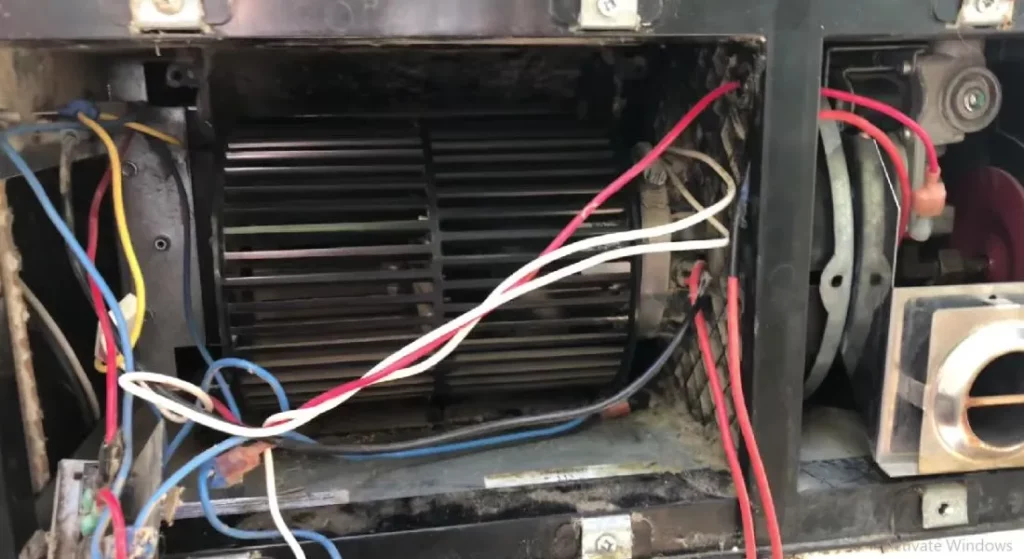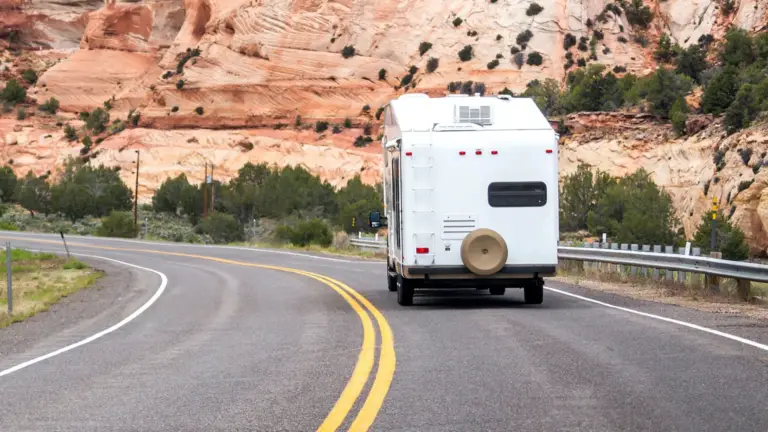8 Reasons Why Your RV Furnace Won’t Stay Lit
In an RV, you enjoy exploring the world. It is conveniently packed with everything you need for a relaxing and enjoyable trip. While traveling and sleeping at night in the RV during the winter, the furnace keeps you warm.
But there are several potential causes for your RV furnace to not be functioning. You may be able to fix an inoperable RV furnace on your own, depending on the symptoms it is showing. This article intends to aid you in the procedure.
There may be one or more of the following causes for your furnace’s failure to light:
1. Issues with the propane tank
2. Issues with the propane line
3. A burned-out thermocouple and pilot light
4. Defective thermostat
5. Airflow issues
6. Clogged drain
7. Faulty blower motor
8. Basic electrical difficulties

Why Is My RV Furnace Not Working in My Camper?
Your RV furnace is a propane furnace or wall heater so the propane tank should be checked since it may be the primary cause of lighting failure. Of course, the valve must be opened for any hydrocarbon gas to be delivered to the heater or furnace.
However, it’s also important to keep in mind that a burned-out thermocouple and pilot light or a defective thermostat can make your furnace unlit.
1. Issues With the Propane Tank
Your furnace’s problem may have something to do with your propane tank. Natural gas problems that are frequently encountered include gas leaks, clogged gas lines, and broken gas valves.
The first step in diagnosing a problem with your propane tank or gas lines is to determine whether any gas is present.
In order to achieve this, you can start the internal propane range, switch the two-way refrigerator to propane, or turn on any other device that uses the same gas line. To check for other potential issues, make a professional phone call. At any time, if you smell gas, get out of the house and call the gas company.
Once you have an RV furnace, have a look at some of these excellent suggestions for reducing your propane consumption.
2. Issues With the Propane Line
A propane coupler can sometimes come loose in cold temperatures because the metal contracts.
Check each one to make sure it is suitably tight by taking a moment to do so.
You would detect the distinct odor of rotten eggs if there was a leak in an internal line running through the RV.
It could be more difficult to find the leak with just your nose if it is outdoors on the mainline. If at all feasible, feel for any cracks or damaged places along the line using your bare hands.
3. A Burned-out Thermocouple and Pilot Light
The thermocouple stops the gas valve to stop the gas from leaking if the pilot light goes out.
A thermocouple may have problems sensing the heat from the pilot light if it is not functioning properly. As a result, the gas valve would be randomly blocked, which could lead to the furnace going out of commission. Replace the thermocouple.
4. Defective Thermostat
The furnace may think it has achieved a set temperature when it hasn’t if the thermostat isn’t working properly.
The thermostat needs to be in heat mode for your furnace to ignite. Your furnace won’t light the burners if it isn’t. Another possibility is that the connections or sensors on the thermostat are broken.
If the issue persists, you can temporarily swap out your RV’s thermostat for a less expensive model. You must get a new thermostat if it doesn’t. If it does, you might want to seek a professional or look for other issues.
5. Air Flow Issue
Air ducts, vents, and unclean or clogged registers can restrict airflow. Because of this, the heat exchanger may overheat, closing the gas valve. This causes the furnace to overheat further, cool down, and then reignite
Cleaning or replacing the air filters will help you with ventilation issues. If the issue continues, you could want expert assistance.
6. Clogged Drain
A condensate pan that catches extra liquid that leaks from a condensing RV furnace are included with the appliance.
A sensor that immediately shuts off the furnace to minimize spillage can be activated if the drain is clogged, causing the pan to overflow with condensation.
To stop this issue from happening, use a wire to unclog the drain, or routinely empty the pan.
7. Faulty blower motor
Turn on the furnace and check to see whether hot air is coming out of the vents while it is operating. If there is no hot air flow, the motor is running on empty.
For the purpose of keeping the heat exchanger from overheating, the furnace is automatically shut off. Additionally, a frayed or damaged motor belt or fan relay are both possibilities.
You can hire an expert to address all of these motor issues.
8. Basic Electrical Difficulties
For the majority of RV propane furnaces to operate effectively, the igniter requires at least 10.5 Volts.
It’s possible that there won’t be enough spark to turn on the system or turn on the thermostat if one or two of your onboard batteries have run dangerously low or have been damaged.
Sometimes the problem is as simple as a circuit breaker tripping. Inspect the panel to make sure that the thermostat and furnace’s breakers are all in the “On” position.
You should check whether the issue is connected to a damaged or loose wire if the onboard batteries demonstrate that they are providing enough power to the system. This calls for a careful method while following wires.
Frequently Asked Questions (FAQs)
Why won’t my RV furnace light?
If the furnace is electric, then the battery may not have enough power or the furnace fuse may have blown as potential causes of the ignition failure. You may not have enough propane supply or your gas valve may not be opening when a propane or gas furnace won’t light.
What Are the Diagnostic Codes for RV Furnaces?
A diagnostic light will be present on newer RV furnaces. The circuit board provides signals that cause the diagnostic light to flash many times, each flash signifying a different code.
Can a broken wire prevent a furnace from lighting?
Your furnace will not start if a wire is damaged. The cable must be changed as the only remedy. Additionally, you can perform it on your own while traveling. Replacement furnace wire is frequently sold at truck stops and establishments that serve RVers.
Final Words
The furnace in your RV and the furnace in your house are comparable. There are many parts that can break off when used. Furnace failure can be avoided with regular maintenance, but wear and tear can occasionally result in a surprise issue.
On the RV, keep the wire and a spare battery. Also, smart ideas are additional blankets and thick drapes. Spending money on accessories like RV skirts and vent covers is OK. When the furnace breaks down when you’re out camping in the winter, you’ll be pleased you did.


